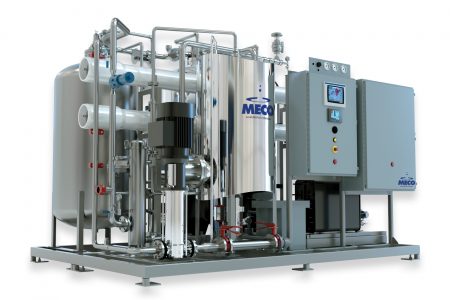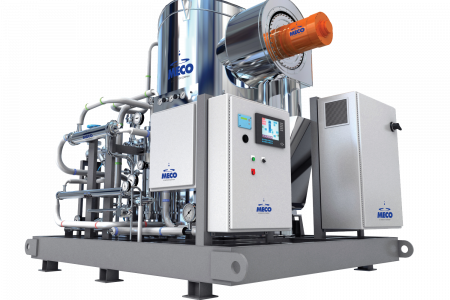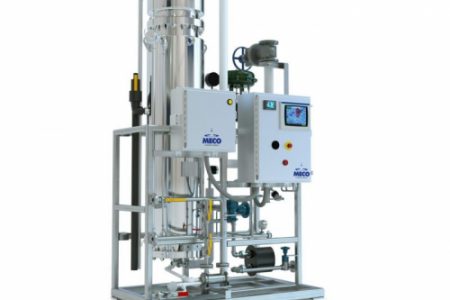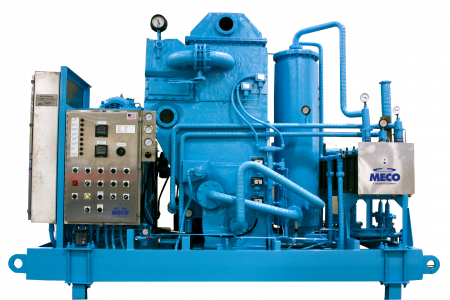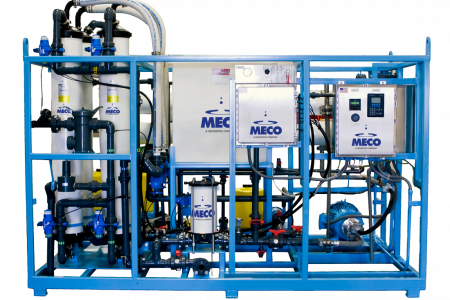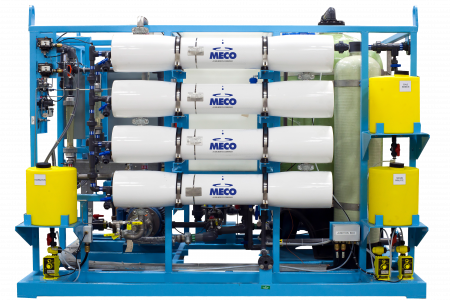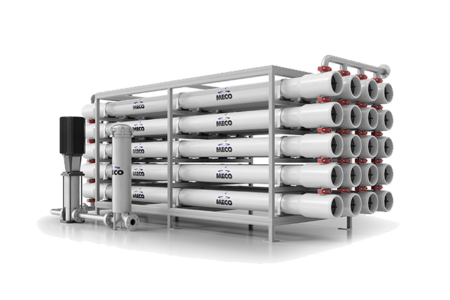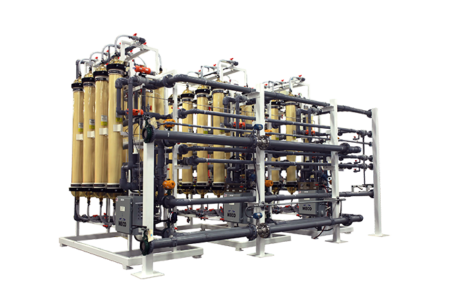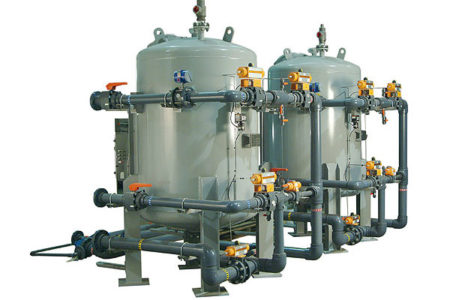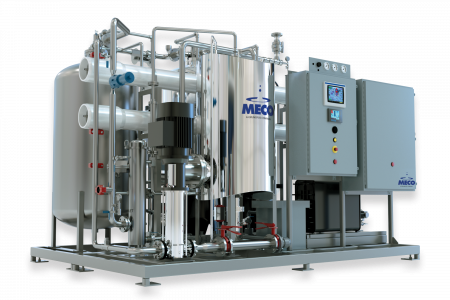MECO Awarded Patent for the use of membrane filtration in biopharmaceutical water systems
Systems utilized to produce water for the biopharmaceutical industry are relatively complex, may have a high microbial load and a relatively low purified water recovery rate. Many are approved only for USP purified water production and not approved for the production of water for injection. Depending upon the system, organic and microbial bioburden may be present throughout until the water to be purified is subject to heating in a distilling step. This can result in a high organic load and bioburden on the still. Where it is desired to reduce the bioburden on the distilling apparatus one may use a reverse osmosis purification step prior to the distilling step. While this may produce some improvement, the reverse osmosis membrane is subject to biofouling.
The systems also typically employ cartridge filters, multimedia filters and/or carbon filters. Multimedia filters typically remove suspended matter down to only about 20-30 microns and carbon filters having a high bio-growth rate and require regular sanitization which increases system maintenance costs.
Consequently, there is a real need for a simplified water purification capable of providing purified water to USP purified water or USP water for injection standards, and specifically a system that is relatively simple in construction and operation and which avoids high organic load and bioburden when distilling and which minimizes the potential for high biogrowth rates at various points in the system.
From the foregoing, one can appreciate the advantage of removing organic and biological burden from the purification system early in the purification process through the use of a microfiltration or ultrafiltration membrane. Consequently, organic loading and bioburden is minimized early on to promote system efficiency by eliminating it as a load on the RO membranes, if used or on the still if the RO membranes are not used. Further, the system operates in an extremely sterile matter since the biological burden is reduced because of the presence of chlorine in the feed water throughout the upstream part of the system and through the application of heat by the still in the downstream part of the apparatus. Organics which provide a source of food for bacteria and result in pyrogen formation are rejected in the microfilter or ultrafilter prior to the feed water entering the remainder of the system and the system typically has an increase on the order of 20%-25% in recovery of purified water from the feed water. All of this prevents substantial biogrowth that may occur within conventional systems wherein multi-media filters, carbon filters, water softeners containing porous resins as well as semi-permeable reverse osmosis membranes which can provide breeding grounds for bacteria.
At the same time, the system is relatively simple in that the use of backwashable, chlorine tolerant micro or ultrafiltration membranes eliminates the need for multi-media filters or cartridge filtration. As a consequence of the elimination of these components, downstream components operate more efficiently and in a more sterile environment due to the higher level of initial filtration.
